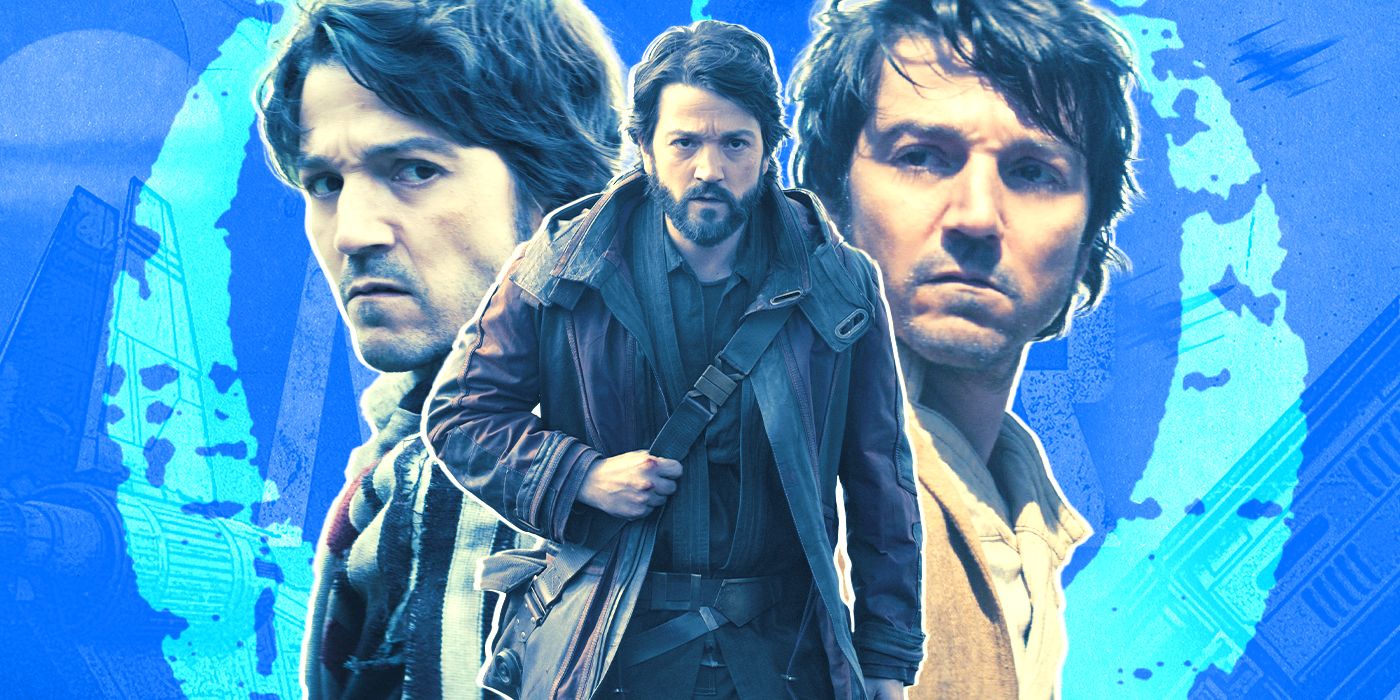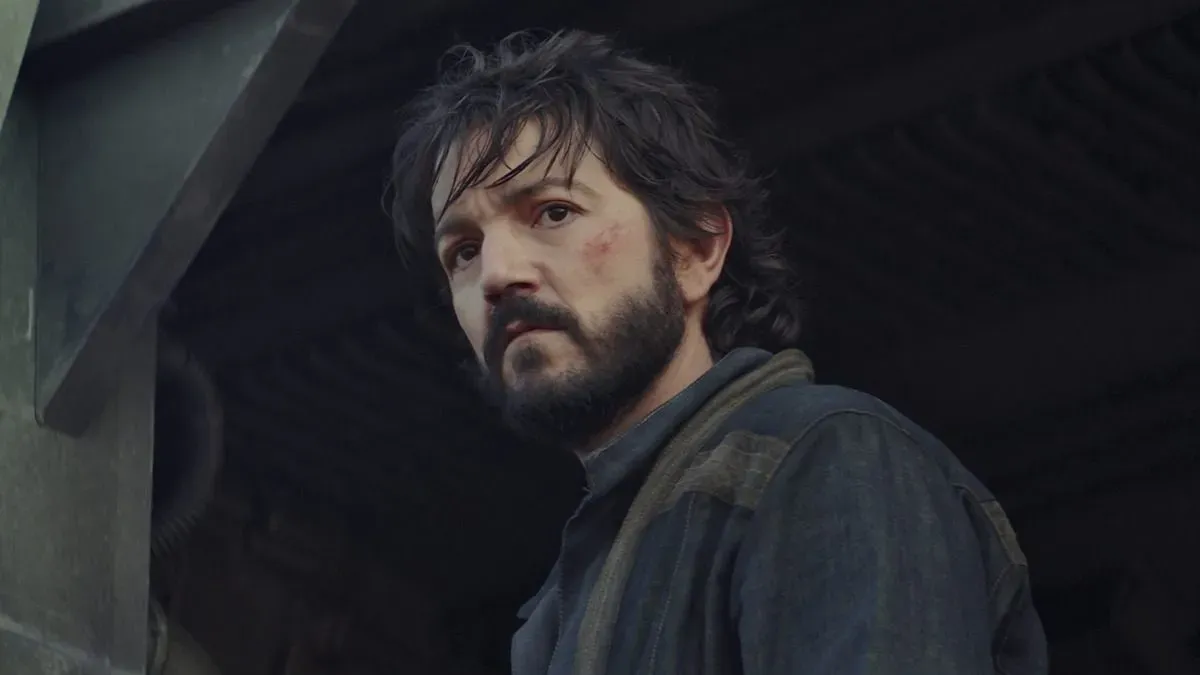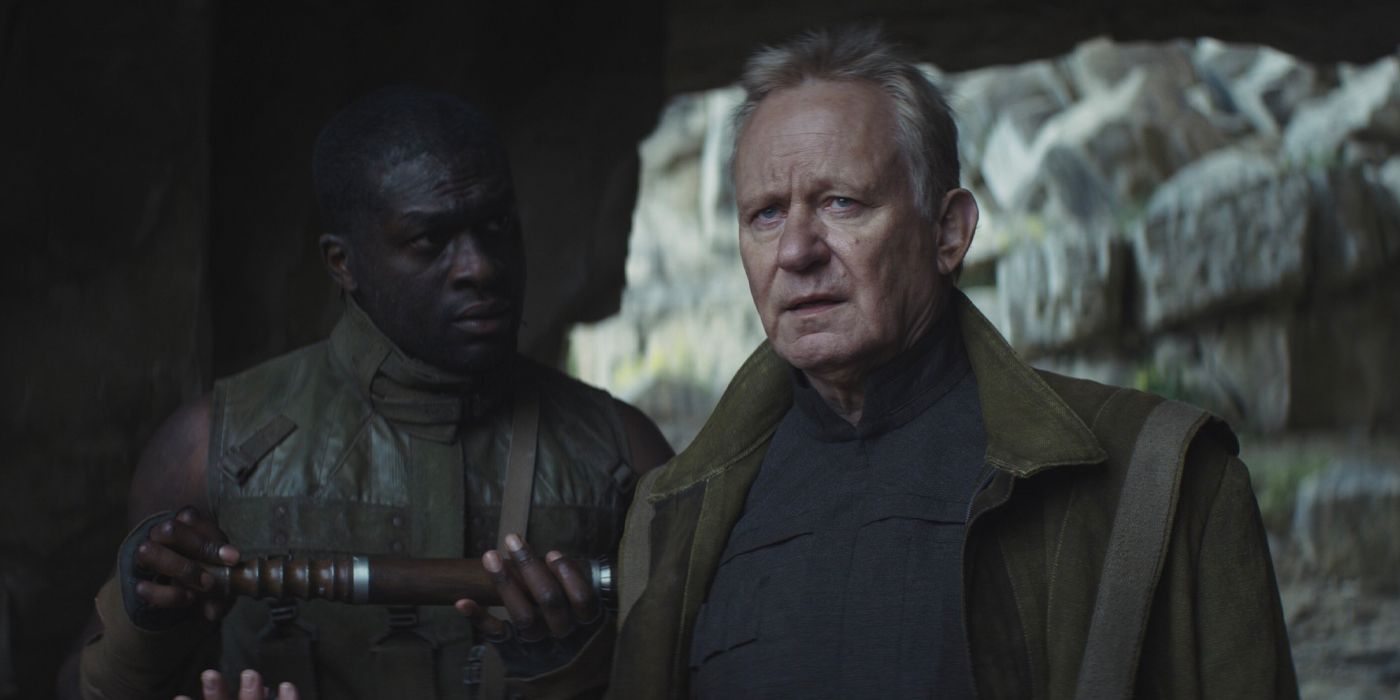Disney+’s Andor gives a dramatically grounded look at the sociopolitical landscape of the galactic empire and the rise of the rebellion in the beloved Star Wars galaxy. By employing a smaller scale and tonally mature approach to the franchise, George Lucas’ legendary space opera is stripped of its fancifully childlike charm and plucky spiritual heroism and is instead examined with political intrigue and interpersonal drama akin to modern prestige TV like Breaking Bad or The Handmaid’s Tale.
In countering the emotional and thematic norms commonly attributed to the galaxy far, far away, and its initial audience, Andor's emotional tone and approach to storytelling mark it as unlike anything the Star Wars franchise has done on screen before, both for better and for worse.
Andor Explores a New Side of the War
As a franchise, Star Wars is a wide canvas of worlds, timelines, and characters that welcome an even wider range of story possibilities to be told. Shows like Visions, The Mandalorian, Rebels, and The Clone Wars expand on the franchise’s canon and embrace the spirit of the films while also creating their own unique identities. Andor does very much the same in telling the story of Diego Luna’s Cassian Andor before his appearance in Rogue One. The series takes great advantage of its intimate scale, character, and place in the canon to give fans a fresh perspective of the iconic galactic war and explore more complex moralities and dramas that have evolved in the war against the empire.
The show is an evolution of the conflicts first established in the original 1977 film by exploring the reign of the empire and the workings of the rebellion in more nuanced ways. The rebel’s fight is shown to not just be on the battlefield with blasters, but with money in the hushed halls of the senate elite on Coruscant and in the underground dealings of political espionage. The empire is not just an evil force with a planet-killing weapon run by an evil emperor and his Sith apprentice, but an omnipresent system of state and corporate regime that oppresses the working class with great prejudice. Andor effectively colors the conflict of Star Wars with a wider spectrum of what is considered good and evil.
Andor's Mature Tone Veers Away From Star Wars' Classic Spectacle and Charm
However, Andor's more mature and nuanced tone does create a noticeable disconnect from the rest of the franchise. By omitting the spirit of classic fantasy and blockbuster adventure, Andor's melancholic characters and dour political plots greatly contrast with even the franchise’s most recent entries. The comic levity, high-flying sense of adventure, and spiritually driven heroism that defined the franchise is absent, made even more apparent by the complexity of the show’s rhetoric which at times makes the simplicity of the original films look juvenile by comparison. The escape and rescue of Princess Leia (Carrie Fisher) off the Death Star plays out drastically more lighthearted than Cassian Andor’s prison escape from Narkina 5. While both depict a plotted escape from empire capture, Andor’s intense prison break is played out with dramatic weight and severity that makes A New Hope look insultingly inconsequential and easy by comparison.
The stories of heroes and villains seen in the original trilogy and series like The Mandalorian do not emotionally meld with the way Andor writes its characters. This is not to say that Star Wars should be tonally homogenized like the Marvel Cinematic Universe, but Andor’s approach to storytelling is inconsistent with practically every other entry in the franchise. Aesthetically, the series also veers away from Star Wars visual trademarks, employing very little use of action sequences, iconography, and otherworldly alien creatures in favor of sterile environments that enable the scenes to focus on the emotions of the human performances.
Andor both expands upon and refutes the genre tonal norms of the franchise to create a uniquely new experience entirely that almost divorces itself from anything globally recognized as being characteristically Star Wars. This can be credited to this is the show's intended audience of savvy long-time adult fans. To franchise creator George Lucas' own admission, Star Wars was always meant for kids, meant to harken back to classical archetypes and legends that children like himself have enjoyed for generations. This philosophy persisted into the rest of the franchise's on-screen life, until Andor, which is markedly geared towards mature adult fans with its emphasis on dialogue and politics. By making a Star Wars series tonally inaccessible to younger audiences, part of the franchise's key appeal is lost, but not to its detriment.



